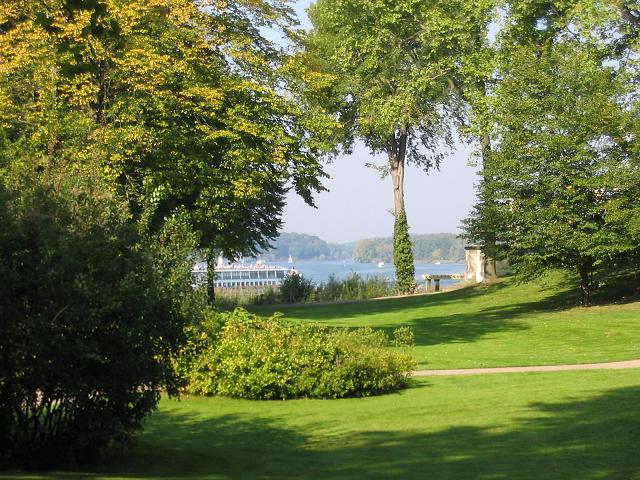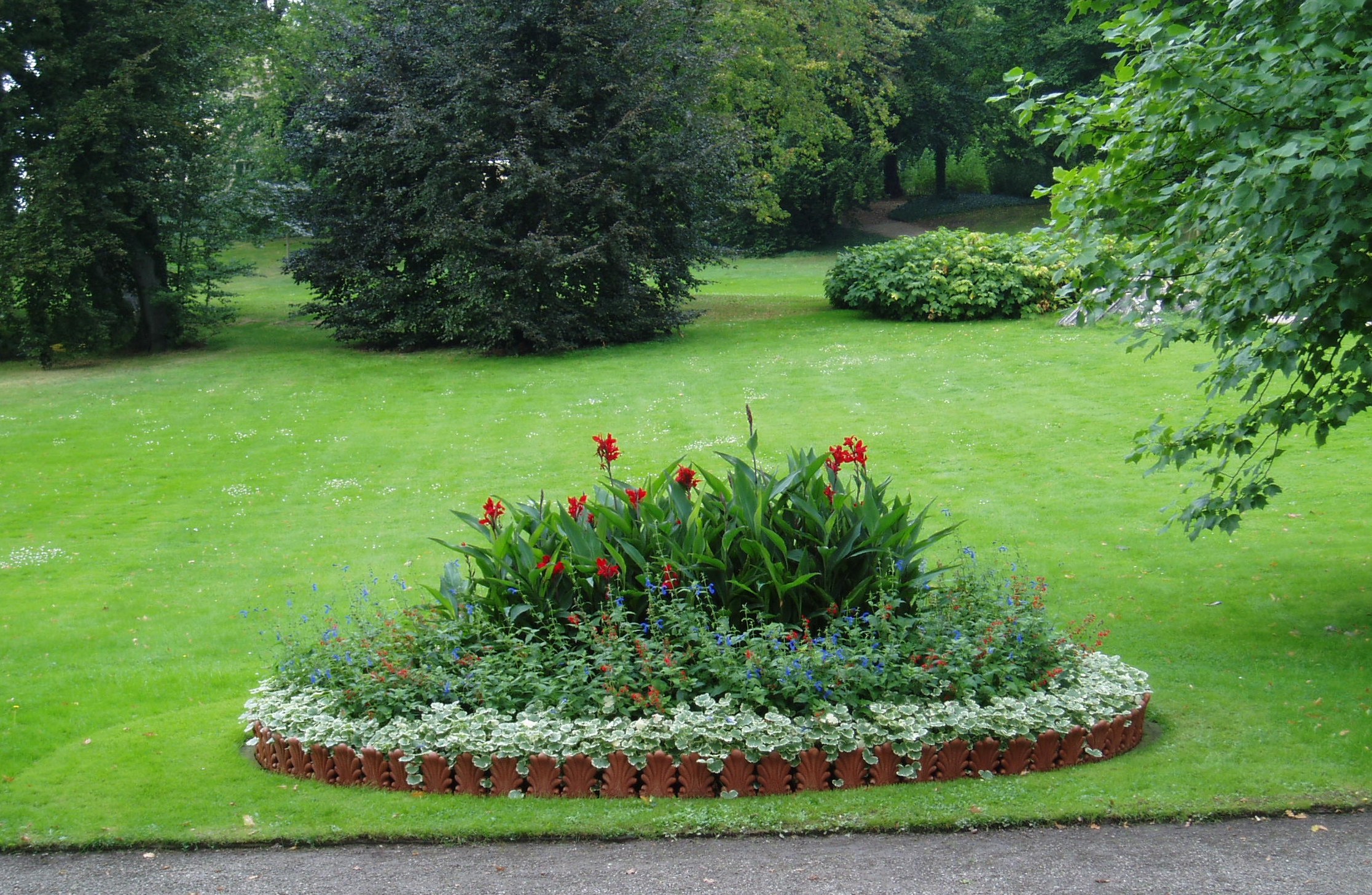Pleasure Ground on:
[Wikipedia]
[Google]
[Amazon]


 In English gardening history, the pleasure ground or
In English gardening history, the pleasure ground or
 In English gardening history, the pleasure ground or
In English gardening history, the pleasure ground or pleasure garden
A pleasure garden is a park or garden that is open to the public for recreation and entertainment. Pleasure gardens differ from other public gardens by serving as venues for entertainment, variously featuring such attractions as concert halls, ...
was the parts of a large garden designed for the use of the owners, as opposed to the kitchen garden
The traditional kitchen garden, vegetable garden, also known as a potager (from the French ) or in Scotland a kailyaird, is a space separate from the rest of the residential garden – the ornamental plants and lawn areas. It is used for grow ...
and the wider park. It normally included flower garden
A flower garden or floral garden is any garden or part of a garden where plants that flower are grown and displayed. This normally refers mostly to herbaceous plants, rather than flowering woody plants, which dominate in the shrubbery and w ...
s, typically directly outside the house, and areas of lawn, used for playing games (bowling grounds were very common, later croquet
Croquet ( or ; french: croquet) is a sport that involves hitting wooden or plastic balls with a mallet through hoops (often called "wickets" in the United States) embedded in a grass playing court.
Its international governing body is the Wor ...
lawns), and perhaps "groves" or a wilderness
Wilderness or wildlands (usually in the plural), are natural environments on Earth that have not been significantly modified by human activity or any nonurbanized land not under extensive agricultural cultivation. The term has traditionally re ...
for walking around. Smaller gardens were often or usually entirely arranged as pleasure grounds, as are modern public parks.
The concept survived a number of major shifts in the style of English gardens, from the Renaissance, through Baroque formal gardens, to the English landscape garden
The English landscape garden, also called English landscape park or simply the English garden (french: Jardin à l'anglaise, it, Giardino all'inglese, german: Englischer Landschaftsgarten, pt, Jardim inglês, es, Jardín inglés), is a sty ...
style. The pleasure grounds of English country house
An English country house is a large house or mansion in the English countryside. Such houses were often owned by individuals who also owned a town house. This allowed them to spend time in the country and in the city—hence, for these peopl ...
gardens have typically been remade a number of times, and awareness has recently returned that even the designs of the famous 18th-century landscapists such as Capability Brown
Lancelot Brown (born c. 1715–16, baptised 30 August 1716 – 6 February 1783), more commonly known as Capability Brown, was an English gardener and landscape architect, who remains the most famous figure in the history of the English la ...
originally included large areas of pleasure gardens, which unlike the landscaped parks, have rarely survived without major changes.
History
The type of garden known as the pleasure ground in the shape of an ornamented area of lawn right next to the house was already known in England duringthe Renaissance
The Renaissance ( , ) , from , with the same meanings. is a period in European history marking the transition from the Middle Ages to modernity and covering the 15th and 16th centuries, characterized by an effort to revive and surpass ideas ...
, and continued to be an essential part of the garden. Encouraged by the landscape architect, Humphry Repton
Humphry Repton (21 April 1752 – 24 March 1818) was the last great English landscape designer of the eighteenth century, often regarded as the successor to Capability Brown; he also sowed the seeds of the more intricate and eclectic styles of ...
, this division of the grounds of a country house spread to Germany around 1800 and was employed ''inter alia'' by Prince Pückler-Muskau and Peter Joseph Lenné
Peter Joseph Lenné (the Younger) (29 September 1789 – 23 January 1866) was a Prussian gardener and landscape architect. As director general of the Royal Prussian palaces and parks in Potsdam and Berlin, his work shaped the development of 19 ...
, who made use of it in their designs at Muskau
Bad Muskau (; formerly ''Muskau'', hsb, Mužakow, pl, Mużaków, cs, Mužakov) is a spa town in the historic Upper Lusatia region in Germany, at the border with Poland. It is part of the Görlitz district in the State of Saxony.
It is located ...
, Glienicke and Babelsberg
Babelsberg () is the largest quarter (''Stadtteil'') of Potsdam, the capital city of the German state of Brandenburg. The affluent neighbourhood named after a small hill on the Havel river is famous for Babelsberg Palace and Park, part of the Palac ...
. The first pleasure ground in Prussia
Prussia, , Old Prussian: ''Prūsa'' or ''Prūsija'' was a German state on the southeast coast of the Baltic Sea. It formed the German Empire under Prussian rule when it united the German states in 1871. It was ''de facto'' dissolved by an em ...
is probably that laid out at Glienicke Palace by Lenné in 1816.
Jane Austen
Jane Austen (; 16 December 1775 – 18 July 1817) was an English novelist known primarily for her six major novels, which interpret, critique, and comment upon the British landed gentry at the end of the 18th century. Austen's plots of ...
makes use of the pleasure grounds in her 1814 novel ''Mansfield Park
''Mansfield Park'' is the third published novel by Jane Austen, first published in 1814 by Thomas Egerton. A second edition was published in 1816 by John Murray, still within Austen's lifetime. The novel did not receive any public reviews unt ...
'' when describing a visit by the young people to Sotherton Court where the owner, James Rushworth plans to hire Repton to make further improvements.
A German description
The German landscape gardener, Hermann, Prince of Pückler-Muskau, explained the meaning of this term in his 1834 publication ''Andeutungen über Landschaftsgärtnerei'' ("Ideas On Landscape Gardening") as follows: :''"The word pleasure ground is difficult enough to render in German and I have therefore felt it better to retain the English expression. This means a piece of land adjacent to a house, which is fenced in and ornamented, of much greater extent than gardens, and something of an intermediate thing, a connecting element between the park and the actual gardens."''Hermann Fürst von Pückler-Muskau: ''Andeutungen über Landschaftsgärtnerei''. Fünfter Abschnitt, Park und Gärten, Stuttgart 1834, p. 48 :And further: ''" ..if the park is an idealised, condensed piece of the natural world, so the pleasure garden is an extended residence ..in this way ..the suite of rooms, is continued on a larger scale in the open air, ..'Pückler-Muskau, Andeutungen, p. 52/53 Pückler-Muskau's description refers to one of the three elements of the English landscape garden that are, from the outer perimeter of the estate to its main building, the park, the pleasure ground and the flower gardens. Usually there was also a flower-bedecked terrace on the house itself so that the transition from the open countryside to the house was in several stages.Form
The pleasure ground was an ornately designed garden area. It consisted of an ornamental lawn at several levels immediately next to the house. This lawn required a lot of maintenance, because the aim was to make the lawn appear like a "velvet carpet". The ornamentation included native and exotic plants that were laid out as flower carpets in various, mostly geometric, shapes and, according to Repton's advice, placed tastefully in the lawn, with round or oval flower baskets hanging mostly near the paths, as well as special individual shrubs and trees, statues, water features, small ponds or garden buildings. A fence separating the pleasure ground from the rest of the park area was intended, on the one hand, to make the separation between the idealized nature of the English landscape garden and the artistic design of the ornamental garden visible. On the other hand, the enclosure was made for pragmatic reasons, in order to keep grazing cattle or wild animals away from the ornamental garden. Around the outside of the pleasure ground, and sometimes partly through it, a winding system of paths – belt walks – led through an area formed by gentle hillocks with groups of shrubs and trees to various viewing points. These could be experienced at places along the walks and offer views of buildings and the surrounding landscape, which is set out as a backdrop.Sources
* Klaus-Henning von Krosigk, chapter about the pleasure ground in: Dieter Hennebo: ''Gartendenkmalpflege''. Verlag Eugen Ulmer, Stuttgart 1985, p. 232–253. * Klaus-Henning von Krosigk: ''Klein-Glienicke mit Pleasureground''. In: Landesdenkmalamt Berlin (ed.): ''Gartenkunst Berlin. 20 Jahre Gartendenkmalpflege in der Metropole''. Schlezky & Jeep, Berlin 1999 * Anne Schäfer: ''Der Pleasureground und die Sondergärten in Branitz''. In: Kommunale Stiftung Fürst Pückler Museum – Park und Schloß Branitz (ed.): ''150 Jahre Branitzer Park''. Cottbus 1998, p. 90–99References
{{Reflist Gardens